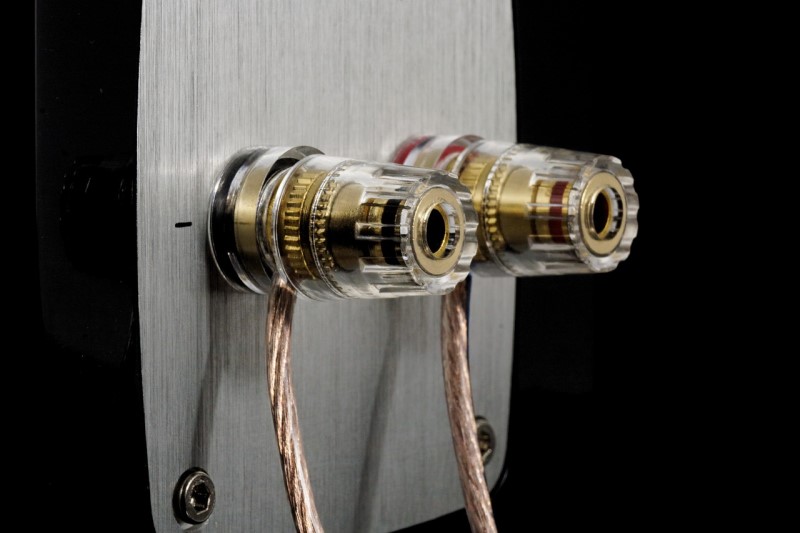QotD: Should I Use Powered Speakers in my Home Theater?
For many of us, our first introduction to buying speakers was needing something for our computer. We got a computer, realized we couldn’t hear it, and started looking for some computer speakers. This led us (inevitably if you are a certain age) to some sort of powered bass module that connected to small satellite speakers that sat on our desks. These speakers were powered by the bass module and some of us thought, could I use powered speakers in other parts of my home and maybe even my home theater?
Answer: No…and yes. But mostly No.
“But wait!” we hear some of you scream at your screen, “Studios use powered speakers all the time! Why shouldn’t I use them in my home theater?”
Author’s Note: Some definitions before we go on. Active and powered speakers are the same thing. They require an external power source (usually a power cord plugged into a wall outlet). Passive speakers get their power from an amplifier. That amplifier can be standalone or built into a receiver. You can think of an active speaker as a passive speaker with an amp built into the enclosure.
Difference between Powered Speakers for Home vs Studio Monitors
The differences have been described multiple times online and elsewhere (link), so we’ll keep it short. Studio monitors are powered, but they are designed to be used nearfield. Like, within arms reach. These speakers sit on top of the gear driving them and it makes sense to put the amps inside the speakers. If you put these speakers in your home theater, they would sound weird at most people’s seated distance. Plus, their off-axis response is usually not as good. They are designed to be super flat and revealing. The list goes on.
So, what are the differences between studio monitors and the powered speakers designed for home theater? Powered speakers for home theater are designed to be used in a larger room with a larger listening sweet-spot. They may be flat, or they may have a specific “sound.” Mostly, they are designed with completely different placement in mind. Home theater speakers don’t often live near the gear that powers them.
Special Mention: Hybrid Speakers
There are a few speaker manufacturers out there that create speakers that are both passive and active. The passive section is often the upper frequencies while the bass section will usually be powered. The other type we see is electrostatic speakers that absolutely require an external power source in order to work properly. Owners buy these speakers because of their sound, not their design. They are unique designs with unique requirements. No matter what type of speaker you own, you should still cross them over into your subs. No, them claiming to be “full range” is not enough. Cross them over.
Benefits of Including Powered Speakers in your Home Theater
There are few benefits of powered speakers over using a traditional receiver setup. You have precise control over every speaker. You no longer need to use the amp section of your receiver suggesting you could get a pre-pro and skip the dedicated amp. This could save you quite a bit of money if you really want to go separates.
Drawbacks of Powered Speakers

While there is no reason you couldn’t use powered speakers in your home theater, there are a lot of reasons you shouldn’t. First, you now have to connect each speaker not only to your receiver but to the wall (for power). This is not only a hassle, but it can introduce buzzing into your home theater. To set this up, you will need a receiver that has all the pre-outs required and of the appropriate type. Most powered speakers designed for home use have RCA connections. If you go more high end, you might find only XLR inputs. No receiver on the market (that we are aware of) has XLR pre-outs. You would need to buy a dedicated, and much more expensive, pre-pro.
Regardless if you use RCA or XLR cables, normal speaker wire costs a fraction of those cables. Running speaker wire inside walls or through conduit is far easier as well. And you can easily self-terminate speaker wire. RCA/XLR? Not so much!
Setting up your home theater is much more complicated with powered speakers. Since each speaker has its own volume control, you would need to level-match your speakers before you run your room correction program. If you have an SPL meter handy (or download an SPL app), that might not be too much of a hassle. But it is an extra step.
You’ve also introduced a limiting factor into your home theater – the internal amps of your powered speakers. If you move to a different, larger, room, you very well could find that your powered speakers can’t fill up the space. With passive speakers, this is not a problem. You just buy a bigger receiver or add an amp. With active speakers, you can only replace the speaker. That’s an expensive solution!
The Exception

There is, of course, a powered speaker that we would always recommend you buy in its powered version – your subwoofers. Manufacturers mate their amps and subs for precise control of the driver and to protect the subwoofer from damaging itself. It has been a few years since we’ve seen a mass-market subwoofer solution with an external amp. You are most likely to run across this in DIY subwoofer kits. We recommend you stick with whatever amp the designer suggests.
Conclusion
Finding a pair of speakers you absolutely love is hard. We know that. If you were to find a pair of powered speakers that moved you, we absolutely encourage you to buy them. This article answers the question, “Should I only be considering powered speakers for my home theater?” That answer is a resounding “No.” Powered speakers add hassles without really solving any problems. Passive speakers are much more prevalent for a reason – they are much easier to work with and they are less expensive.



I think you could update this with a section about WISA. I was listening to a few podcasts about some of the new transmitters at ces this year. Using self powered speakers with wisa and a power only connection could be helpful in certain rooms. Especially like a bedroom set up.
We love WISA and all the wireless technologies that are out there. I’ve used PlayFi devices and often recommend them. WISA has been trying to get into home theaters for a while. They’ve not really made any headway. Some of the transmitters and receivers are available but mostly they are used for subwoofers. Plugging speakers into a wall just isn’t something people seem to want to do. I can’t tell you how many Soundbar with Wireless surround speaker systems I’ve seen with the soundbar set up and the surround speakers unused.